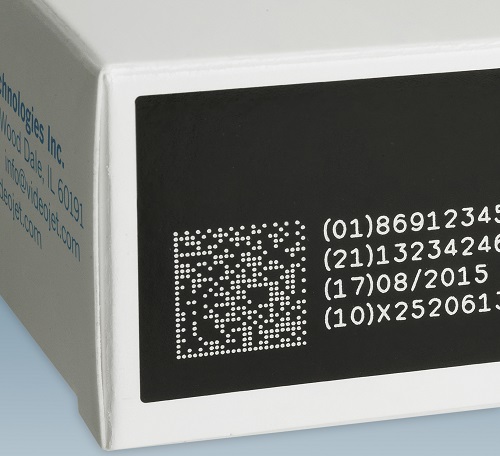In recent years the pharmaceutical industry has seen a significant change to the way its manufacturersand supply chains operate, due to the establishment of several serialization and track and trace regulations mandated globally.
The prominent driving force behind such regulations is the issue of counterfeit medications and supply chain diversion.
It is estimated that in the developed world around 1% of all medications sold are counterfeit. In developing countries that percentage rises as far as 30% . Governments around the world have recognised the severity of this issue, and as a result are beginning to put in place several major serialization regulations. Deadlines for implementation in key markets such as the US and EU areclose, while in countries such as Turkey, Brazil and Argentina, regulations have been commonplace for many years now. In Europe, the Falsified Medicine Directive (FMD) was published in February 2016 and gives the industry three years to comply from that date. In the US, the Drug Supply Chain Security Act (DSCSA) has three key deadlines; lot-level management was already established in January 2015, item-level serialization on each individual single product will be required by November 2017, and by 2023 electric pedigree and full aggregation of products throughout the supply will be mandated.

Challenges of implementing serialization regulations for CMOs
For Contract ManufacturingOrganizations (CMOs) theprocess of implementing serialization iscomplicated, mainly due to the lack of certainty among their customer base as to their requirements. This can cause delays for the CMOs and pose a real concern now that deadlines are approaching.
For CMOs there are two key considerations to address when implementing serializationinto existing packaging lines; understanding what is requiredfrom them as a company and also understanding what their customersneed. Furthermore, CMOs need to understandwhat markets their customers sell in, be it globally or locally, as regulatory requirements can differ.
Similar to traditional manufacturing operations, CMOs must also be conscious of the fact that, as they implement more complex processes to their packaging lines,the Overall Equipment Efficiency (OEE) of their systems may be negatively affected. It is important to understand that good preparation, the right equipment and a focus on operator training can significantly reduce the negative impacts on operations. Ensuring that code formatting is correct and lead times on key equipment are accounted for are other important factors to overcoming challenges.
Operational Framework
Undertaking a serialization programme requires a comprehensive understanding of the stages of implementation. The typical framework for implementing a serialization programme consists of six phases:
- The initial phase involves defining the strategy, identifying what needs to be done in terms of serialization, which stakeholders need to be involved and what the goals of implementation are.
- Once the strategy has been established,an organization must undertake an in-depth analysis of each system, as well as the IT infrastructure, and identify what needs to be replaced and what new systems are required.At this point, stakeholders and others involved in the project going forward should also commence the training process.
- Next follows the design phase; based on a clear definition of what needs to be achieved the contract manufacturer starts to design the solution, examining the hardware and process facets, as well as the IT and qualification, testing and validation features. Now is the time to start preparing what is called the organizational change management – identifying how the program affects how people work within the company. This is vital, as serialization implementation will impact both processes at the manufacturing line and also at the warehouse stage when it comes to shipping and receiving goods.
- The forth phase involves the building of the solution based on individual, well defined user requirements. Changing and testing of the individual equipment commences and customers start to look at how the systems will be integrated from an IT point of view.
- The penultimate phase is where the final solution is built and the project goes live.
The final phase involves dealing with issues which arise as a result of the implementation, such as temporary reduction of efficiency on the packaging line, and also measuring whether the benefits of implementation are being realized once the process is underway.

If an organization engages in a structured framework of serialization implementation there is an opportunity to create real business value from a programme.
Preferred Equipment
As packaging standards continue to grow in complexity due to regulatory developments, both manufacturers and contract manufacturers are faced with the challenge of how to gain a return on the investments they make in their packaging lines. Improperly selected printer technologies can seriously impede the speed and productivity of packaging lines, which can have a detrimental effect on profit margins. Selecting the correct printing technology from a dependable supplier is one of the most important considerations manufacturers need to make when implementing a serialization program.
Along with regulatory factors, the need for high resolution printing and printer cleanliness have also been driving forces behind the innovation of existing and new printing technologies in recent years. Consequently, packaging engineers now have a varied selection of printing technologies from which to pick, the most popular being Thermal Inkjet (TIJ) and Laser.
TIJ coding and marking systems are ink-based, non-contact printers generally used to print traceability information, including 2D DataMatrix codes, onto commonly used packaging. The printer uses small resistors to propel ink drops onto packaging as it passes by the printhead. This system is used for high-resolution printing, utilizing heat and surface tension to move ink onto a package surface.
Laser printing systems use a beam of infrared light focused and steered with a series of carefully controlled small mirrors to create marks where the heat of the beam interacts with the packaging surface. Laser marking can be used to print 2D bar codes as well as human readable codes.
Conclusion
Serialization and trace and trace regulations are becoming commonplace within the pharmaceutical packaging industry, andinterpreting how to implement serialization practices within existing packaging lines does not come without its challenges for manufacturers across the board. However,understanding how to structure a serialization programme, being conscious of key regulatory deadlines and understanding customer requirements are keys to success for CMOs in the pharmaceutical industry.
Finding a partner who is able to support that process from start to finish has significant benefits, as the smoother the transition, the less downtime will be experienced. Having the backing of a global service network is something to be mindful of, as is finding a partner who has significant experience in implementing serialization solutions and the structure in place to deliver to requirements – from a single coding unit to a turnkey project.

















![Sirio Launches Global Research Institute for Longevity Studies [SIA]](https://www.worldpharmatoday.com/wp-content/uploads/2019/09/Sirio-218x150.jpg)



